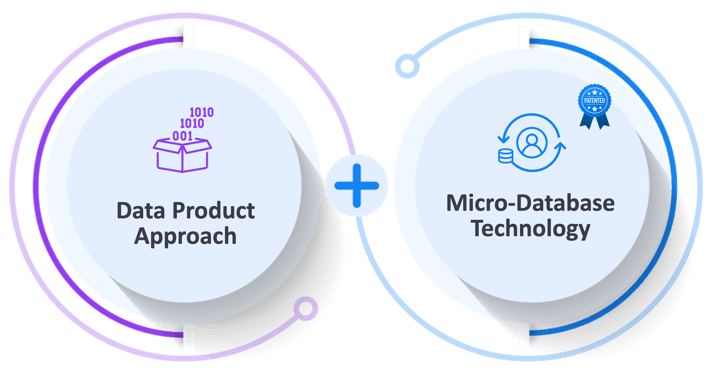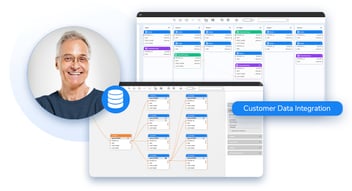Table of Contents
Customer Data Management Definition
Customer Data Management History
Customer Data Management Checklist
Revitalize Customer Data Management Platforms with Agile Customer 360
Customer Data Management Definition
A Customer Data Management (CDM) platform provides an enterprise with a 360-degree view of its customers. Companies use CDM not only to gain a trusted view of its existing customer base, but also to better understand the needs of all potential customers. This knowledge fosters more engaging and relevant interactions with customers, in general.
Customer Data Management History
Customer Data Management was born in the 1980s, as a precursor to Customer Data Integration (CDI) and Master Data Management (MDM). After all, even prior to the digital era, companies still needed to leverage the wealth of customer information they were amassing.
In the 1990s, Customer Relationship Management (CRM) platforms came about to track and manage existing customer data more effectively.
In the 2000s, enterprises began to adopt Data Management Platforms (DMPs), to extend their reach to wider target markets as well. For instance, DMPs could ingest information about potential customers from data warehouses to create and manage cookies – and then deliver targeted ads to specific customer segments online.
In the 2010s, Customer Data Platforms (CDPs) combined all these data systems, in order to better manage marketing campaigns, customer segmentation, and data orchestration. One overriding principle drove this evolution: The need to collect, manage, and use customer data to its fullest potential.
According to Gartner, the use of Customer Data Management technologies leads to better customer experiences. Therefore, more and more enterprises have adopted a CDM platform to (1) break down old domain-based silos, and (2) combine customer master data, transaction data, and interaction data – for a better understanding into customer behaviors and relationships with the company. This is called Customer 360 for short.
Customer Data Management Checklist
To enhance data-driven personalization, customer experience, and wallet share, enterprises need a sophisticated Customer 360 strategy that extracts, unifies, and connects customer data across all data sources. Before choosing a platform, make sure it’s able to:
-
Define Customer 360 in your organization
According to analyst Gartner, defining Customer 360 cross-company is a key challenge. For example, a customer who’s placing orders with one of your business domains, may be a prospect for another one. At the same time, while one domain may refer to anyone who’s placed an order in the last 3 years as an active customer, another domain may remove them from the list unless they’ve made a purchase in the last 3 months. Defining Customer 360 in terms of which customer characteristics you want to track and manage is key – in order to know exactly who your customers are, and how to reach them.
-
Unify master, transaction and interaction data
To get a clear picture of your customers, you need to combine their master data with data from their transactions (orders, payments, and support tickets) and interactions (chat, social media, and call notes). And make certain that this holistic customer view is searchable across both structured and unstructured data. A well-designed Customer 360 program leads data teams to more effective execution, strategy, and analysis.
-
Ensure all your customer data is clean, compliant, secure, and accessible
Only the most trusted data can be used for real-time decisioning and offline analytics. With trusted data, you’ll be able to:
– Adhere to privacy regulations, throughout the data pipeline.
– Transform, cleanse, enrich, and test your data, before it’s synced across systems.
– Automate data management tasks, for increased efficiency and productivity.
Revitalize CDM Platforms with Agile Customer 360

A data product approach coupled with innovative Micro-Database™ technology revitalizes the traditional customer data management platform with the creation of agile Customer 360 systems. Here’s what each brings to the table:
|
Data Product Approach |
Micro-Database Technology |
|
Agile, with short, incremental delivery cycles |
Flexible, with big bang or phased deployment |
|
Reusable, across business domains |
Accurate, with clean, complete, fresh data |
|
Efficient, leveraging current investments |
Scalable, compliant, and secure |
|
Collaborative, creating a common language |
Quick ROI, with implementation in weeks, |














